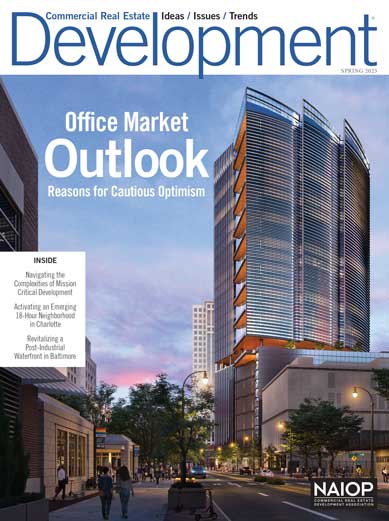In the Ongoing Amenity War, Office Space is the New Battleground
Developers should avoid over-the-top nuclear options; instead, use smart bombs tailored to tenant needs.
Technological advances make the vertical journey better for tenants — and property owners.
Developers should avoid over-the-top nuclear options; instead, use smart bombs tailored to tenant needs.
As demand rises for adaptable office space, facilities put walls in motion.
Property managers are using “dynamic and multidimensional” information for operations but not yet for tenant engagement.
Proposed rules for the tax incentive plan could dramatically boost real estate investment in regions that are struggling economically.
NAIOP gathered national research directors in October for an in-depth discussion of industrial and office trends, city rankings, adaptive reuse and other important topics.
Commercial real estate is in the midst of a digital revolution, and some of the biggest upheavals will affect professionals who work closely with property owners and tenants.
 Summer 2025 Issue
Summer 2025 Issue
Development’s summer 2025 issue explores experiential retail and the brick-and-mortar resurgence. Also featured: a modern warehouse campus in Toronto that honors its manufacturing heritage; a coalition of Oregon real estate organizations working to revitalize downtown Portland; and the creative capital stack strategy behind a mixed-use project in West Baltimore.
 Spring 2025 Issue
Spring 2025 Issue
The spring 2025 issue offers insights about where the office market might be heading over the coming year, explores the complexities of mission critical development, and provides detailed looks at two transformative mixed-use projects: The Bowl at Ballantyne in Charlotte and Baltimore Peninsula in Maryland.
 Winter 2024/2025 Issue
Winter 2024/2025 Issue
Development magazine’s winter issue delves into the evolving uses of artificial intelligence in the commercial real estate industry, from lease management and building operations to portfolio assessment and data analysis.
